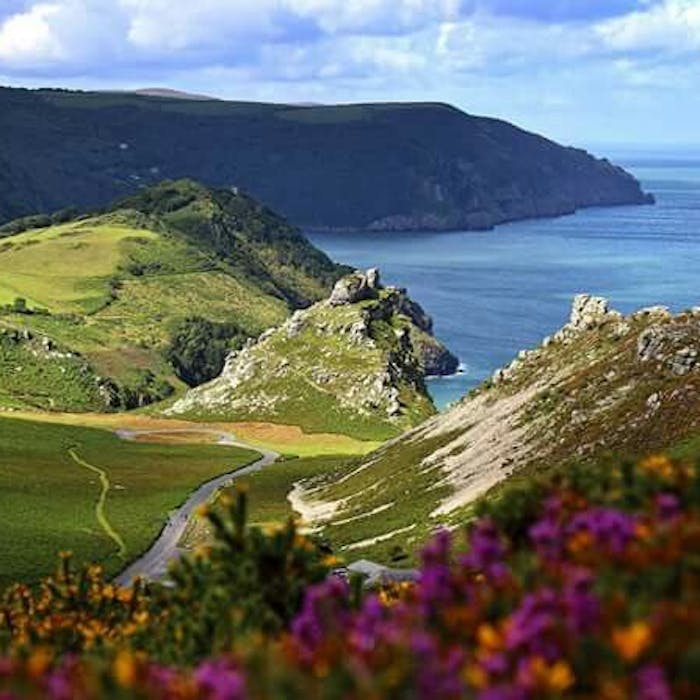
The Valley of the Rocks - dramatic and romantic north Devon landscape
The Valley of Rocks is a dry valley that runs just inland parallel to the coast in north Devon, a short walk to the west of the tourist resort of Lynton. It is a popular destination, noted for its herd of feral goats, and for its distinctive landscape and geology.
The valley has craggy rocks on either side, offering a dramatic foreground to the sea beyond. The cliffs are steep here, and it is entertaining and impressive to see them dotted with free-roaming goats. The area is on the South West Coast Path, and is part of a particularly delightful section through Exmoor.
The origin of this strange land form is uncertain. One theory suggests that the East Lyn River originally flowed here, before joining the sea further west. The river eroded the channel forming the valley, parallel to the coastline. The cliffs would have extended further north, but have since been claimed by the powerful sea waves over the years. Eventually, the river would have broken through, diverting its course directly into the sea, leaving the old course dry.
Another theory references the Ice Age, suggesting that originally the Lyn River may have taken a similar course to what we see today. The arrival of a vast ice sheet blocked the valley mouth, forming a giant lake. Eventually overflowing, water carved a new channel – the Valley of the Rocks. Once the ice retreated, the river reverted to its original route, leaving the Valley of the Rocks drained dry.
Goats have been present in the valley for hundreds of years, with mention of them in the Domesday Book. More recently, a herd was released here in 1897. Surviving until the mid-1960’s, several very cold winters finally wiped out the population. The valley was re-populated in the 1970’s with the release of a small number of feral goats, who have flourished, with numbers incrreasing year on year. Periodically, such groups are released into new parts of the country to assist in land management schemes where their grazing habits improve the plant biodiversity.
Many Romantic poets have visited the area, to be impressed by the Valley of the Rocks, They include Samuel Taylor Coleridge, William Wordsworth and Robert Southey. Later, R. D. Blackmore set part of his novel Lorna Doone (first published in 1869) in the valley.
Further Reading
Links to external websites are not maintained by Bite Sized Britain. They are provided to give users access to additional information. Bite Sized Britain is not responsible for the content of these external websites.
